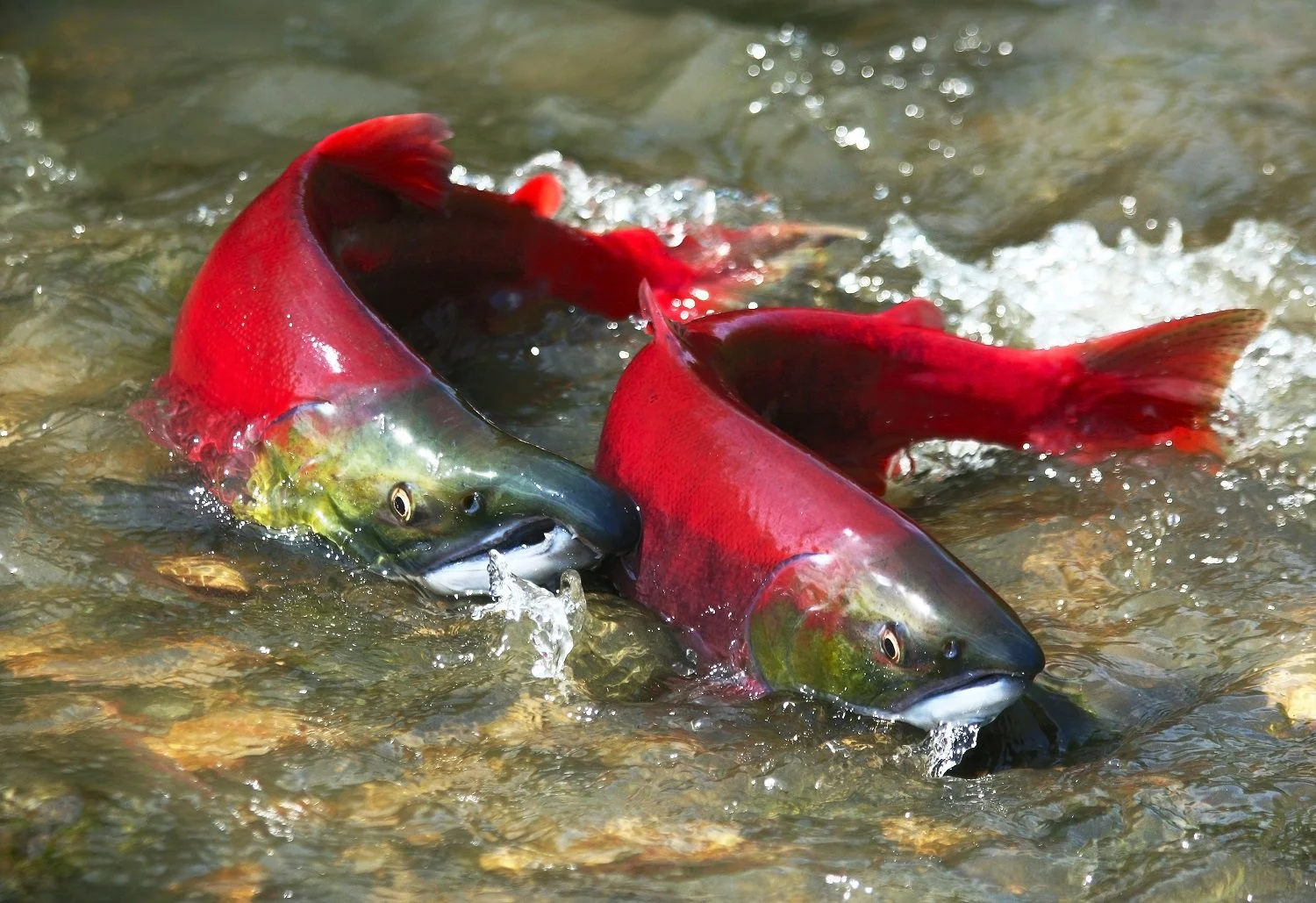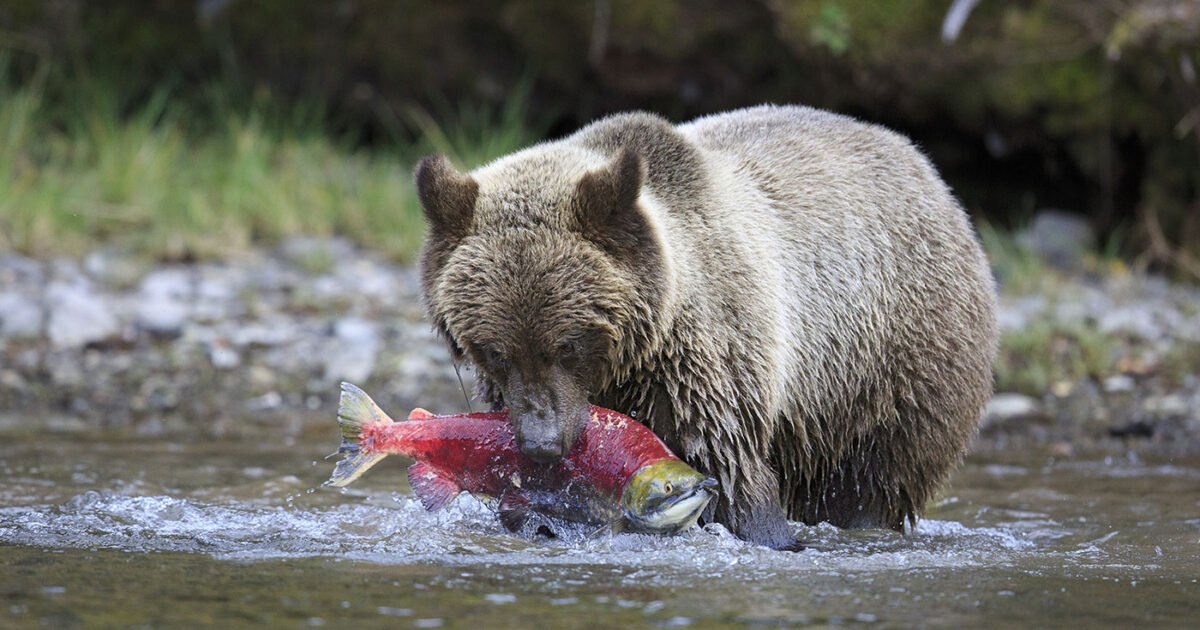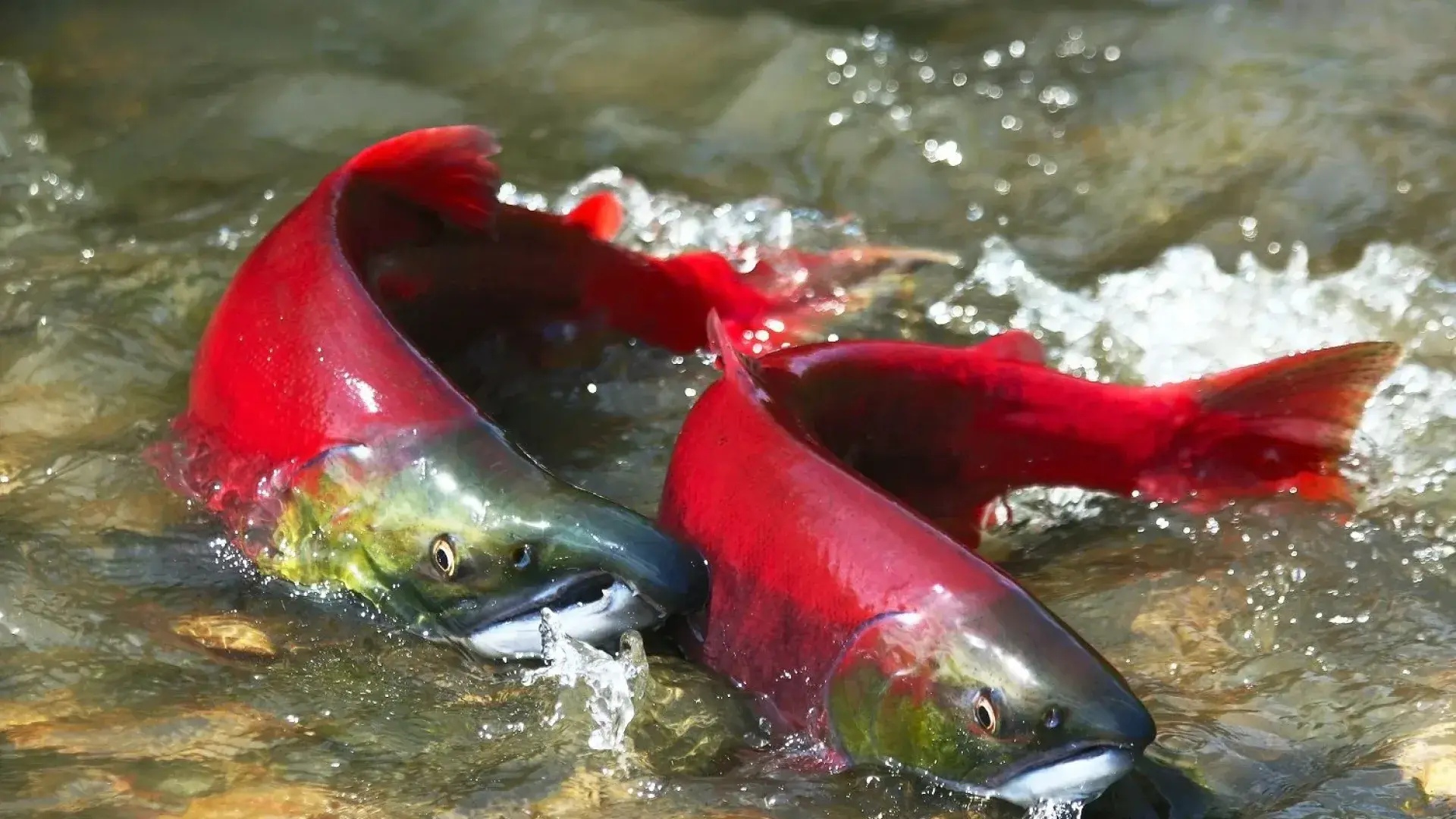While in Unalaska, Alaska, we met two individuals quietly carrying out some of the most important environmental work in the Aleutians. After coming across our podcast, they approached our boat and invited us to see their work the next day. What followed was an eye-opening look into the underfunded and often invisible efforts to restore Sockeye Salmon (Oncorhynchus nerka) populations on the island.

We joined them at Iliuliuk Creek, one of several sites where they monitor salmon runs. A gate stretches across the creek, gently funneling fish into a narrow passage where they can be counted and sampled by hand. It’s slow, meticulous work but essential. Each fish provides real-time data that informs management decisions across a region both remote and ecologically critical.
From each salmon, a small fin clip is taken for genetic analysis. These samples help track return patterns to river systems, assess genetic diversity, which is key to population resilience, and detect responses to changes in temperature, migration, and reproduction caused by climate change.
Unalaska’s salmon weren’t always in crisis. But during World War II, the ecosystem was permanently altered. According to local accounts, three lakes were bombed by the U.S. military because a general’s wife reportedly disliked the smell of fish.
It sounds unbelievable, but the legacy is real. The bombings destroyed vital spawning grounds, disrupted freshwater and sediment flows, and caused long-term ecological damage. Decades later, depleted stocks, fragmented habitats, and the collapse of subsistence fisheries remain.
The researchers we met are skilled and deeply committed. But their resources are minimal. They receive just $200 a week for groceries, and funding for salmon revitalization on the island has been cut in half. This limits their ability to reach remote sites, maintain equipment, and expand research or education efforts. It is a stark reminder of how critical conservation work often goes unsupported.
Despite this, they stay grounded in their mission. A few of their words stuck with us:
“Earth has finite resources, but large companies are looking at infinite expansion.”
“Change is gonna come from the bottom up.”
“Be stewards of your own ecosystem.”
Their wisdom points to a deeper truth. Real change rarely begins with policy. It starts with people who care enough to act.
Sockeye Salmon are a keystone species. They feed bears, eagles, and marine mammals. Their carcasses fertilize forests by transferring marine nutrients upstream. When salmon struggle, entire ecosystems suffer.

The genetic samples collected at Iliuliuk Creek may hold clues to survival, traits that help salmon adapt to warming waters, shifting migrations, and new parasites. These efforts are not just about saving fish. They are about protecting Alaska Native food systems, culture, and ceremony.
What is happening in Unalaska is more than data collection. It is restoration. It is advocacy. It is resistance. And it is a reminder that conservation still matters because it is personal.
In their hands, the future of Sockeye Salmon is not just a statistic.
It is a fight worth showing up for.
From the Field,
Grace

